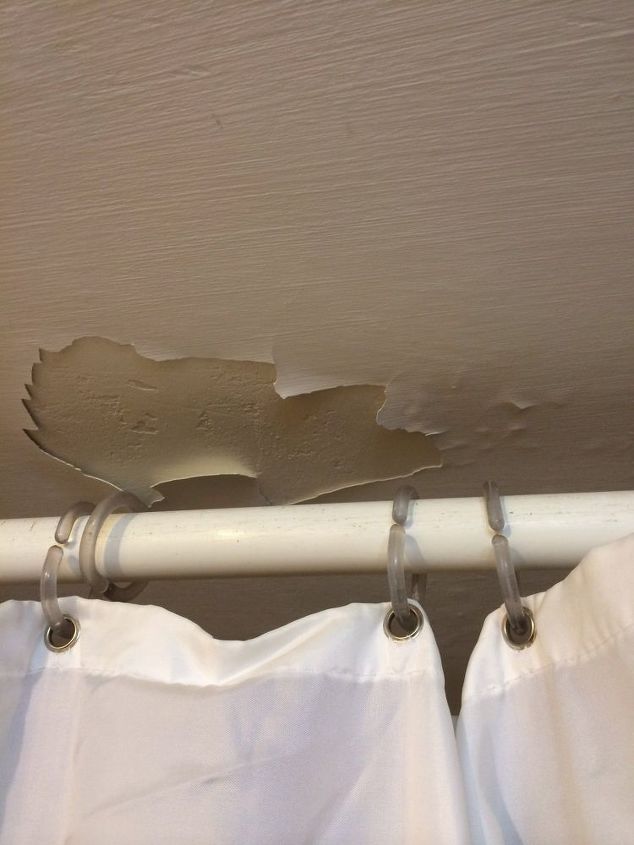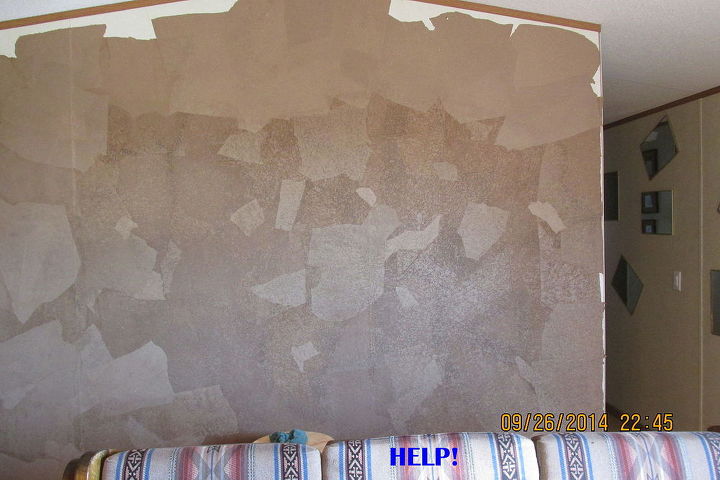Wall Treatment
-
What type of wall treatment are you talking about Jill. That could make a big difference. Do you have any photos to share? They could help too.
 Z
on Sep 24, 2015
Helpful Reply
Z
on Sep 24, 2015
Helpful Reply -
-
Whether it is truly dry wall plaster you can sand it to remove or simply take off any rough areas and run a skim coat of joint compound using a wide joint knife from top to bottom over it. When it sets up you simply resand the area with a fine grit sandpaper ( 220 grit ) and will ready to paint. Hope this helps. Bill
 Bill
on Sep 24, 2015
Helpful Reply
Bill
on Sep 24, 2015
Helpful Reply -
-
In my option any time you take wall treatment down there are going to be issues. No walls are perfect to start and removing wallpaper or whatever there will be something visible.Repair any damage with spackle sand down and paint.
 Janet Pizaro
on Sep 24, 2015
Helpful Reply
Janet Pizaro
on Sep 24, 2015
Helpful Reply -
-
If it's older than 1970, yes, yes and yes. Get a lead test from your local hardware store and test it to check for lead. Chances are it contains it!!!
 Hope Williams
on Sep 25, 2015
Helpful Reply
Hope Williams
on Sep 25, 2015
Helpful Reply -
-
check for lead and for asbestos. Some wall coverings (not wallpaper, but more of a liner to smooth out the walls) can contain asbestos. Better to be safe than sorry. Built in the '50s there's a good chance it's drywall. Removing anything from that surface could peel off the paper (and some chunks of gypsum) in the process leaving you with pocked walls. If the surface just has to go and you find that you have issues with removal I'd add 1/4" wallboard and give it a new start.
 Jeani Miller Miner
on Sep 25, 2015
Helpful Reply
Jeani Miller Miner
on Sep 25, 2015
Helpful Reply -
-
Whatever you do, wear a mask and bag the debris well, as it is the airborne dust particles that cause problems . . . asbestos, lead, and a myriad of other irritants to our lungs (especially children's). Dispose of the debris carefully, keeping in mind that burning wood that has been painted with lead will also release the toxins into the air we are breathing.
 Dee
on Sep 25, 2015
Helpful Reply
Dee
on Sep 25, 2015
Helpful Reply -
-
First and foremost, because the age of the home there will be lead paint, so make sure to use the proper face mask that is for protecting against lead and asbestos. Since you didn't say what kind of wall covering you are wanting to remove, it's hard to give suggestions, but with that said, let's talk about wallpaper. When removing wallpaper you want to see if it dry stripable first and pull off as much as you can, don't be alarmed if you see a off white paper left behind, for this paper which would become your sizing agent if you were to paper the wall again. This backing and any of the areas of the paper that didn't come off by its self can be removed by a stripping agent and a wallpaper stripper blade. There are round scoring tools that you can use, but you must be careful not to cut into the plasterboard. Once you have removed all of the paper, backing, and glue, I would recommend giving the wall a light sanding and wiping it down to make sure all of the dust is removed before proceeding with the type of finish you are going to apply. If the wall covering is a texture finish, the easiest way to deal with it would be to wipe it down to remove dirt and grime, then fill in any holes and give it a skim coat, and then proceed with the finish you want on the walls. Now if there is paneling or ceiling tiles, you could come across asbestos, for some of the old adhesives had asbestos as part of the components, and certain ceiling and floor tiles have asbestos in them, so if this is the case be sure to check with a professional, for the danger of the asbestos lies in it becoming air borne.
 LD
on Sep 25, 2015
Helpful Reply
LD
on Sep 25, 2015
Helpful Reply -
-
I took down paneling in a bedroom in my 1973 house. I found a 4x4 section of missing drywall under one of the windows, bare 2x4's with no insulation. No wonder the room was always cold. Removing the walls can be a Pandora's box, but it was worth it for us.
 Karen Lemon
on Sep 26, 2015
Helpful Reply
Karen Lemon
on Sep 26, 2015
Helpful Reply -
-
Sometimes its better to just sheetrock over it all.
 T.hatfield
on Sep 28, 2015
Helpful Reply
T.hatfield
on Sep 28, 2015
Helpful Reply -
-
FYI it is not recommended to sheet rock over until you know if there are any existing problems.
 Janet Pizaro
on Sep 28, 2015
Helpful Reply
Janet Pizaro
on Sep 28, 2015
Helpful Reply -
-
Thanks for all the responses to this question. Have not moved forward yet. Will have a rethink on the 'great idea' :)
 Jill
on Sep 30, 2015
Helpful Reply
Jill
on Sep 30, 2015
Helpful Reply -
-
Asbestos was used extensively before the 1970s, so there's a chance if you remove the drywall you may find some. Having the stuff removed costs thousands of dollars. Here's how one homeowner tackled this problem: http://goo.gl/zi4pIy
 HouseLogic.com
on Oct 01, 2015
Helpful Reply
HouseLogic.com
on Oct 01, 2015
Helpful Reply -
Related Discussions
How to get rid of mice?
We seem to have some unwelcome Mickeys and Minnies in our house. What is the best way to get rid of them?
How to remove popcorn ceiling with asbestos?
I want to remove my popcorn ceiling, but it has asbestos in it. How do I go about this safely?
How to caulk baseboard gaps?
How do I fill gaps at baseboard, should I caulk? If so, does anyone know how to caulk baseboards?
How to fix squeaky hardwood floors?
How do I fix squeaky hardwood floors?
Water damage on bathroom ceiling
I am about to patch up this water damage on a low bathroom ceiling. What can i paint/seal the entire ceiling with to minimize future water damage? the ceiling is very... See more
Brown paper floor/wall help
I have purchased a brown roll of paper because I wanted a consistent "vein" look through out the walls and the brown paper bags I was getting would sometimes be "vein... See more





